Home Run Derby Five-Minute Guide: Everything you need to know

The last time the Home Run Derby was held in Cincinnati, in 1988, it was rained out. That was the only time in the Derby’s 31-year history that it was canceled, and with the All-Star festivities back in Cincinnati this year, Major League Baseball is hoping to avoid a similar result despite an unfavorable forecast. Below is a breakdown of everything you need to know about the 2015 Home Run Derby, including the new rules, the host ballpark and the eight participants. Weather permitting, the Derby is scheduled to begin at 8 p.m. ET and be televised by ESPN.
• MORE: SI’s All-Star Game coverage | ASG debate: On A-Rod, Pete Rose
The Format
Kyle Schwarber, Lucas Giolito impress as Team USA rolls in Futures Game
After 10 years without alteration, the Home Run Derby has changed its format significantly in each of the last two seasons, with this year’s structure both streamlining and building upon last year’s innovations. The big lesson from last year was that head-to-head matchups that produce results every two batters are compelling and rewarding, but long seeding rounds, which comprised last year’s first round and all but the finals of the pre-2014 format, are not. So, gone is the endless parade of homer accumulation that produces no decisive results until after eight (or, last year, 10) men take their hacks. Instead, this year’s contestants have been seeded based on their first-half home run totals and placed directly into a bracket (see below).
Each pair will hit in successionwith the lower seed batting second. If the second contestant passes the first’s home run total in a given round, his turn will automatically end. That could help speed things along, but a more significant effort to increase the Derby’s pace comes via the fact that each player’s turn will be limited, not by a number of “outs” (swings that result in anything other than a home run), but by a clock. Each slugger will get five minutes per turn with the clock starting with the first pitch. Ties will be broken by 90-second swing offs, and if the swing-offs result in a tie, the contestants will move to three-swing swing-offs until one of them emerges as the victor.
Picking the 25-and-under All-Stars as wave of young talent makes impact
All of that sounds simple enough, which brings us to the “bonus time” rules, which complicate things significantly. To begin with, any home run hit in the final minute of a player’s turn will stop the clock and the clock will not restart until the batter has a swing that does not result in a home run. This is designed to allow a player to go on a home run barrage like Josh Hamilton’s famous 28-homer first-round in 2008. A player who goes deep on consecutive swings in that final minute will be allowed to keep swinging with the clock stopped until that string of homers stops (the catch being that if he goes second in his matchup, he’ll be stopped once he surpasses the first hitter’s total).
Things get far more complicated than that, however. With Statcast measuring projected home run distances live during the Derby, a player will earn an extra 30 seconds of time for any home run measured at 475 feet or more and will earn an extra minute of time by hitting two home runs each measuring 420 feet or more. Each bonus can be earned only once, but both can be earned if a batter hits one home run of 475 feet or more and a second of 420 feet or more. Doing so will net him a minute and a half of extra time.
UPDATE: Because of weather concerns, MLB has slightly tweaked the format. Each hitter will now get only four minutes to hit. There will be no stopping the clock for home runs in the final minute and the only bonus time that will be rewarded is 30 seconds for two home runs of 425 feet or more.
The essential elements of the new format, then, are the bracket, the clock and the bonus time rules.
Note: All distances (in feet) and exit velocities (in miles per hour) are from ESPN’s Home Run Tracker. HR/Con is home runs on contact, the percentage of fair balls hit by the batter that were home runs (HR/Con = HR/(PA – K – BB – HBP)).
The Derby Field
Seed: 1
Age: 35
2015 HR (HR/Con): 26 (9.0%)
Career HR (HR/Con): 546 (7.4%)
Avg.: 399.6
Long:438
Exit Velo.: 104.3
Pujols is the first member of the 500 Home Run Club to participate in the Derby since 2004, when Barry Bonds, Sammy Sosa, Rafael Palmeiro and future member Jim Thome all lost to Miguel Tejada. Despite being the Derby’s oldest participant this year, Pujols is the deserving top seed. He is tied with Mike Trout and Bryce Harper for the second most homers in the majors behind the injured Giancarlo Stanton, and he is second to Joc Pederson in home runs on contact percentage among this year’s field.

Albert Pujols
1B, Angels (R)
Seed: 2
Age: 29
2015 HR (HR/Con): 25 (8.9%)
Career HR (HR/Con): 98 (6.3%)
Avg.: 398.4
Long:428
Exit Velo.: 103.3
The hometown hero, Frazier reached the finals in last year’s Derby, his first, but managed just two home runs in the final two rounds combined and 10 total, ultimately losing to repeat champion Yoenis Cespedes, who passed on defending his Derby crown when he failed to make the American League All-Star roster. Frazier, who is third in the NL in home runs, has hit 15 of his 25 homers at the GAP this season, but he enters the Derby having not homered in his last 53 plate appearances.

Todd Frazier
3B, Reds (R)
Seed: 3
Age: 29
2015 HR (HR/Con): 21 (7.4%)
Career HR (HR/Con): 84 (5.7%)
Avg.: 408.1
Long:469
Exit Velo.: 105.2
Also participating in his second Derby, Donaldson didn't make it out of the first round last year. He enters this year's event tied with Manny Machado among Derby participants for most homers in July with three. Given the weather forecast and his propensity for cloud-scraping home runs, expect plenty of references to Donaldson’s humble twitter handle @BringerOfRain20 tonight.

Josh Donaldson
3B, Blue Jays (R)
Seed: 4
Age: 23
2015 HR (HR/Con): 20 (10.3%)
Career HR (HR/Con): 20 (9.4%)
Avg.: 430.5
Long:480
Exit Velo.: 106.9
Pederson’s home run statistics are the most impressive of this group. Not only does he lead the bunch by having homered on 10.3% of the balls he has hit fair on the season, but, according to ESPN’s Home Run Tracker, Pederson’s home runs leave his bat faster and travel further on average than those of the other seven participants. Finally, his 480-foot shot off the Rockies’ David Hale on June 2 is the third longest home run on the season, behind a pair of 484-foot homers by Giancarlo Stanton. However, Pederson has been slumping badly of late and has just three home runs in his last 146 plate appearances dating back to June 4.

Joc Pederson
CF, Dodgers (L)
Seed: 5
Age: 23
2015 HR (HR/Con): 19 (6.7%)
Career HR (HR/Con): 20 (4.1%)
Avg.: 387.3
Long:422
Exit Velo.: 101.9
Machado is the least impressive slugger of the bunch as, in stark contrast to Pederson, the average exit velocity and distance on his home runs is by far the lowest of this year’s Derby field. Machado’s career home runs on contact percentage also trails the group by a significant amount, but it’s worth remembering that he’s also the youngest participant. Machado just turned 23 a week ago, and his 19 home runs this season have already surpassed his previous career high by five. He has hit 13 home runs in his last 40 games and his line-drive approach won’t necessarily prevent him from getting balls out of the GAP.

Manny Machado
3B, Orioles (R)
Seed: 6
Age: 25
2015 HR (HR/Con): 16 (5.9%)
Career HR (HR/Con): 87 (5.7%)
Avg.: 402.1
Long:441
Exit Velo.: 104.0
Rizzo ranked second in the NL in home runs last year with 32 and enters the break this season with 16. The dramatic drop in Rizzo’s strikeout rate this year (from 18.8% to 12.1%) suggests that’s the direct result in a change in approach, but look for him to revert to his 2014 style for the Derby, in which he’ll be just one of three lefties in a lefty-friendly ballpark.

Anthony Rizzo
1B, Cubs (L)
Seed: 7
Age: 31
2015 HR (HR/Con): 14 (4.7%)
Career HR (HR/Con): 302 (7.1%)
Avg.: 413.0
Long:449
Exit Velo.: 104.4
The Home Run Derby is Prince Fielder’s jam. He is one of just three two-time champions (joining Ken Griffey Jr. and Yoenis Cespedes), having won in 2009 and ‘12, and this will be his sixth Derby, the most among this year’s participants. Fielder failed to make it out of the first round in 2013 and was injured and unable to participate last year, but he’ll take his swings tonight in a lefty-friendly ballpark as the only participant to have homered over the weekend, teeing off against the Padres’ Ian Kennedy on Friday. However, Fielder’s HR/Con% this season is by far the lowest among the eight participants of this year’s event.

Prince Fielder
DH, Rangers (L)
Seed: 8
Age: 23
2015 HR (HR/Con): 12 (6.4%)
Career HR (HR/Con): 12 (6.4%)
Avg.: 406.9
Long:463
Exit Velo.: 104.6
Bryant’s power, which was eye-popping in the minors, has come along more slowly in the majors. He didn’t hit his first major league home run until his 21st game with the Cubs, and while he has maintained a 30-homer pace since then, that’s less than was expected given his 43 homers in 138 games in Double and Triple A last year. Still, after seeing Bryant star in the Futures Game last year, fans were left salivating at the thought of seeing him take part in a Derby. It’s a treat that Bryant is fulfilling that wish so quickly.

Kris Bryant
3B, Cubs (R)
Bracket

Get To Know The Ballpark
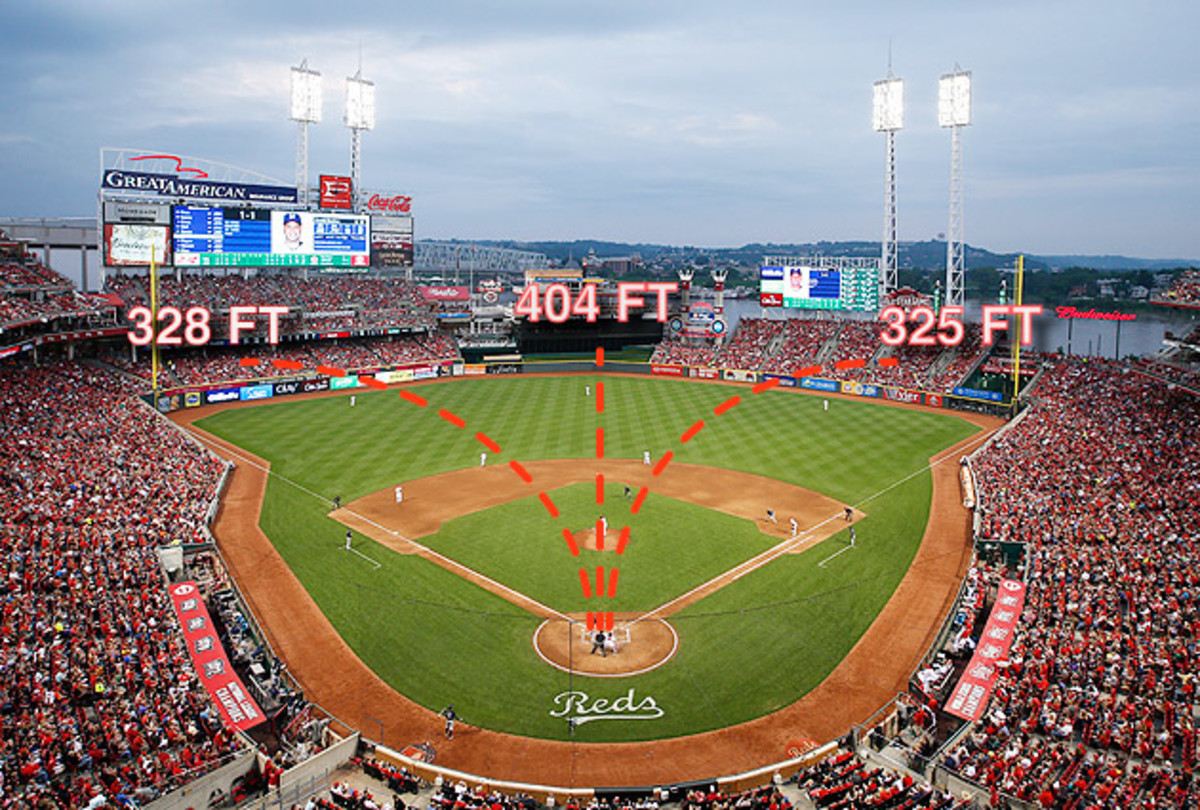
Cincinnati’s Great American Ball Park, which opened in 2003, has been the most homer-friendly stadium in baseball for most of its existence. According to the Bill James Handbook, the GAP (which draws it’s inaccurate acronym from a gap in the stands to the third-base side of home plate) led the majors from 2011-14 with a home run park factor of 140. The GAP is even friendlier to lefties that righties. Not only is the rightfield wall closer (325 feet down the line and 370 to the power alley compared to 328 and 379 in left), it is shorter too, a standard eight feet compared to the 12-foot wall that extends from left-center to the leftfield foul pole.
That’s not to say that righties have a hard time getting the ball into the seats in Cincinnati. Look no further than hometown Derby participant Todd Frazier for evidence of that. Indeed, per James, the GAP and Milwaukee's Miller Park are tied for the highest home run park factor for righthanded batters over the previous three seasons (133). The park factor for lefties over the same span, however, has been 152, meaning lefties hit 52% more home runs in Cincinnati than at the average major league ballpark. This stadium is a launching pad, which should make for quite a show in Monday night’s Derby.
GALLERY: THE HOME RUN DERBY'S GREATEST MOMENTS
The Home Run Derby's Greatest Moments
1985
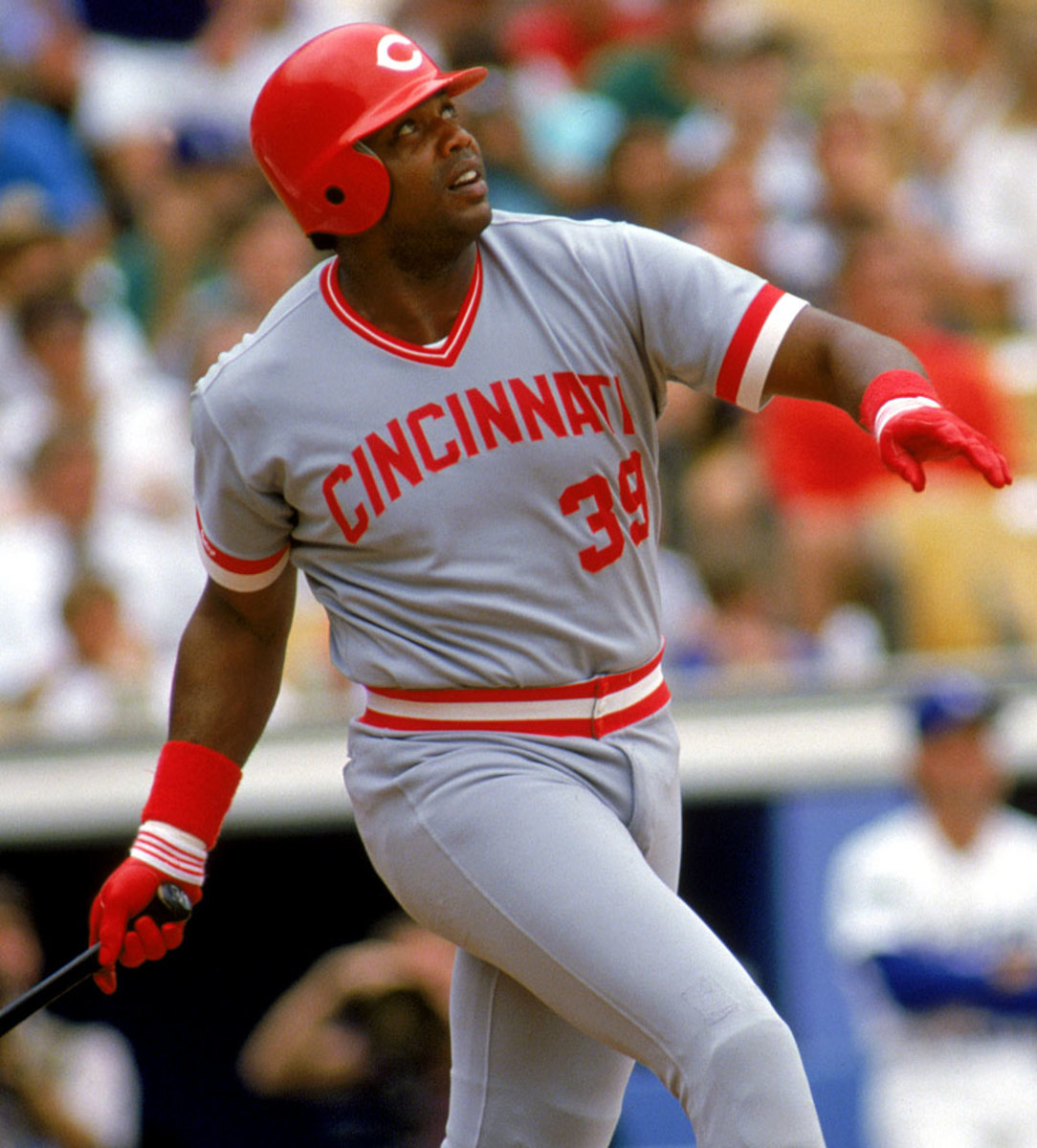
Dave "The Cobra" Parker was the original Home Run Derby champion, belting six home runs to defeat a field that included Jim Rice and future Hall of Famers Eddie Murray, Carlton Fisk, Cal Ripken Jr. and Ryne Sandberg at the Metrodome. Back then it was an AL vs. NL competition, and the Junior Circuit won 17-16.
1990
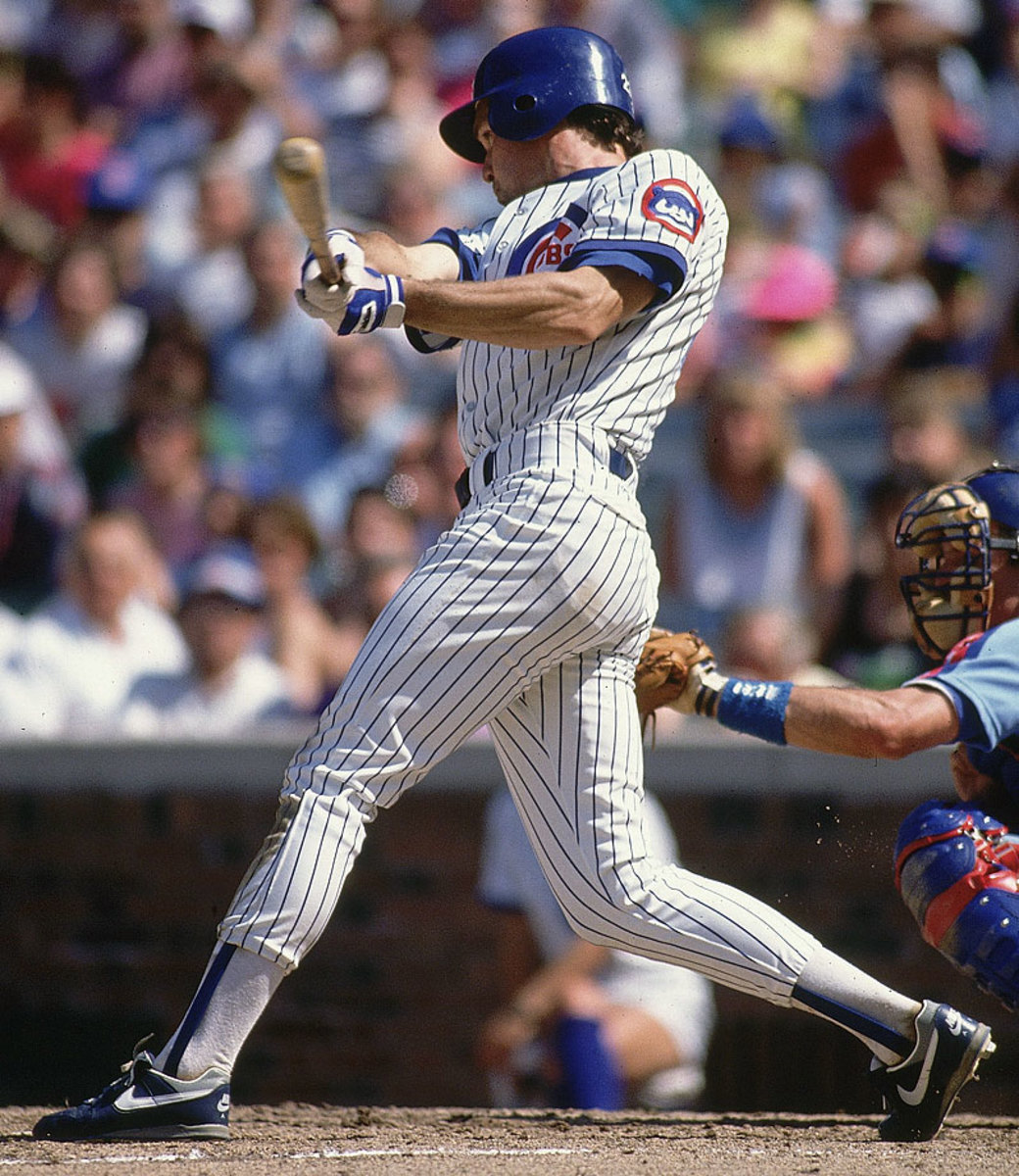
Future Hall of Famer Ryne Sandberg took home top honors in a Derby that was decidedly toned down from what it would become in later years. He needed only three home runs to win it at Wrigley Field, his home ballpark.
1991
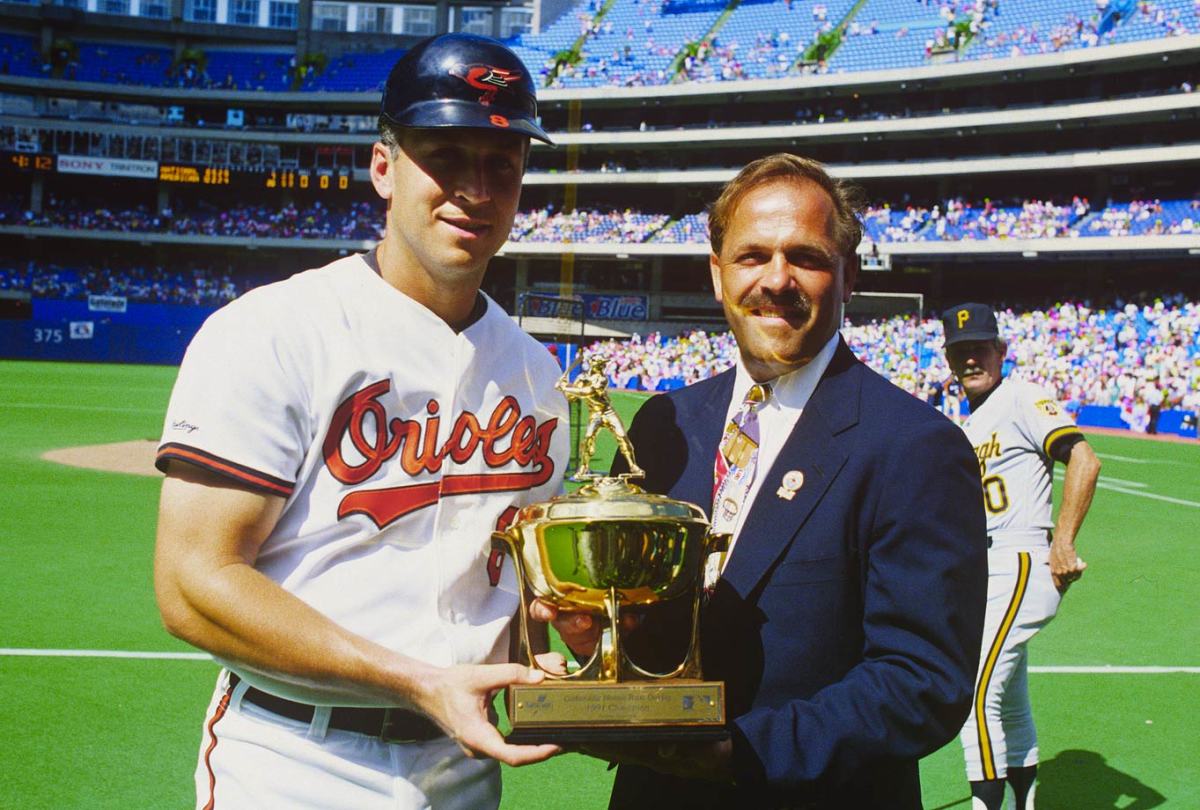
Cal Ripken Jr. blew away the field with 12 home runs at the Skydome and then homered in the All-Star Game as well to take home MVP honors. He is one of only three players to win the Derby and homer in the Game, with Frank Thomas (1995) and Garret Anderson (2003) being the others.
1993
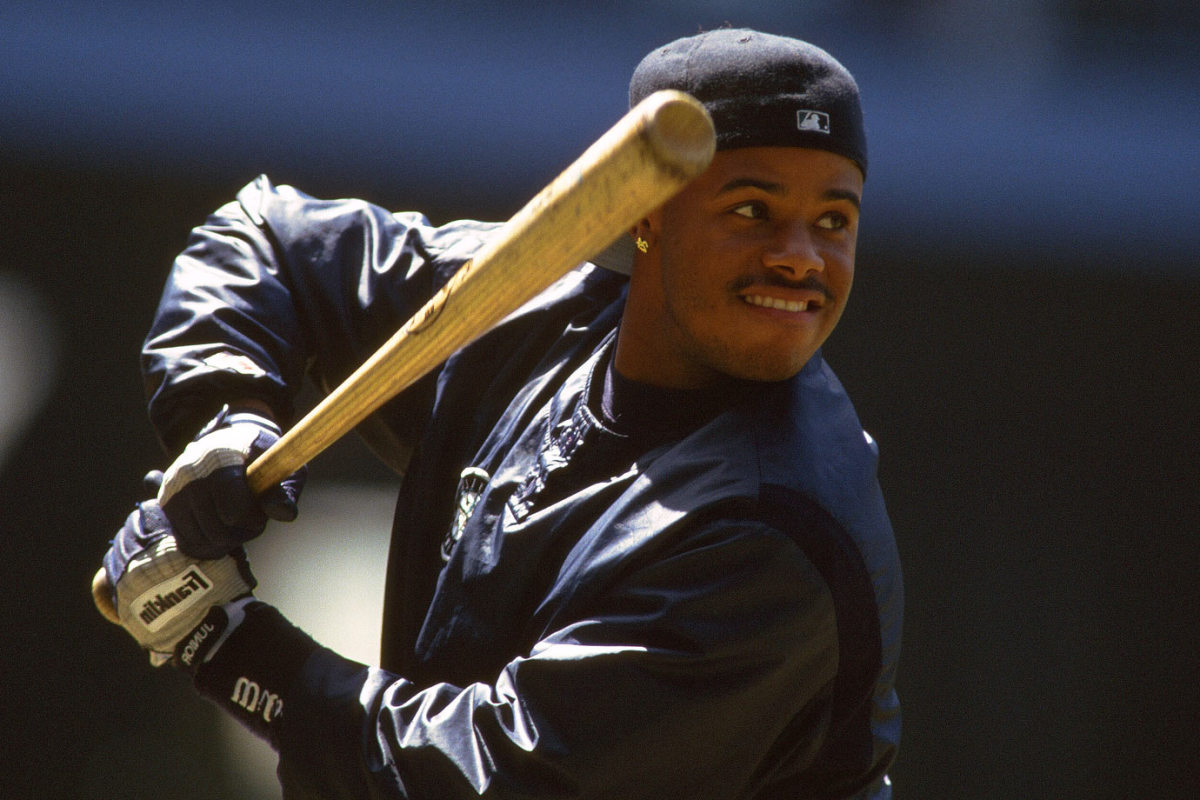
Ken Griffey Jr. led the American League to a 21-12 win over the NL, thanks in part to a home run off the warehouse across the street from Camden Yards.
1996

Future Home Run King Barry Bonds took home his only Derby crown at Veterans Stadium long before any rumors of performance-enhancing drugs surfaced.
1998
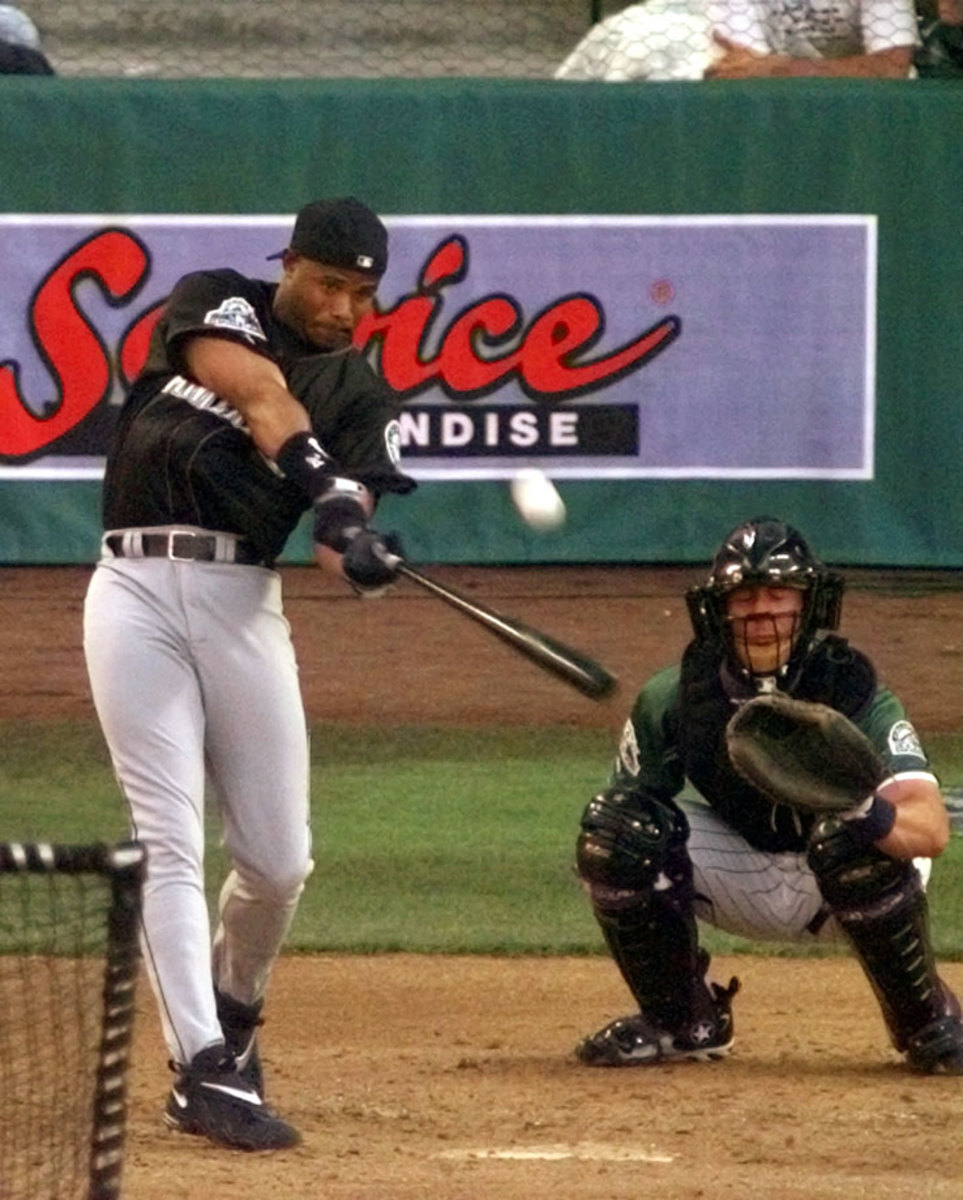
Ken Griffey Jr. became the first two-time winner of the Derby by edging Jim Thome 19-17 at Coors Field.
1999

Reigning single-season Home Run King Mark McGwire lived up to his title by blasting 13 home runs over the Green Monster to open the Derby at Fenway Park. McGwire would falter in the second round, though, as Ken Griffey Jr. took his second consecutive crown.
2000

Sammy Sosa electrified the Turner Field crowd by crushing the field with a then-record 26 homers. The next-highest total belonged to Boston's Carl Everett with 12, though it was Ken Griffey Jr. who made it to the final round opposite Sosa.
2004
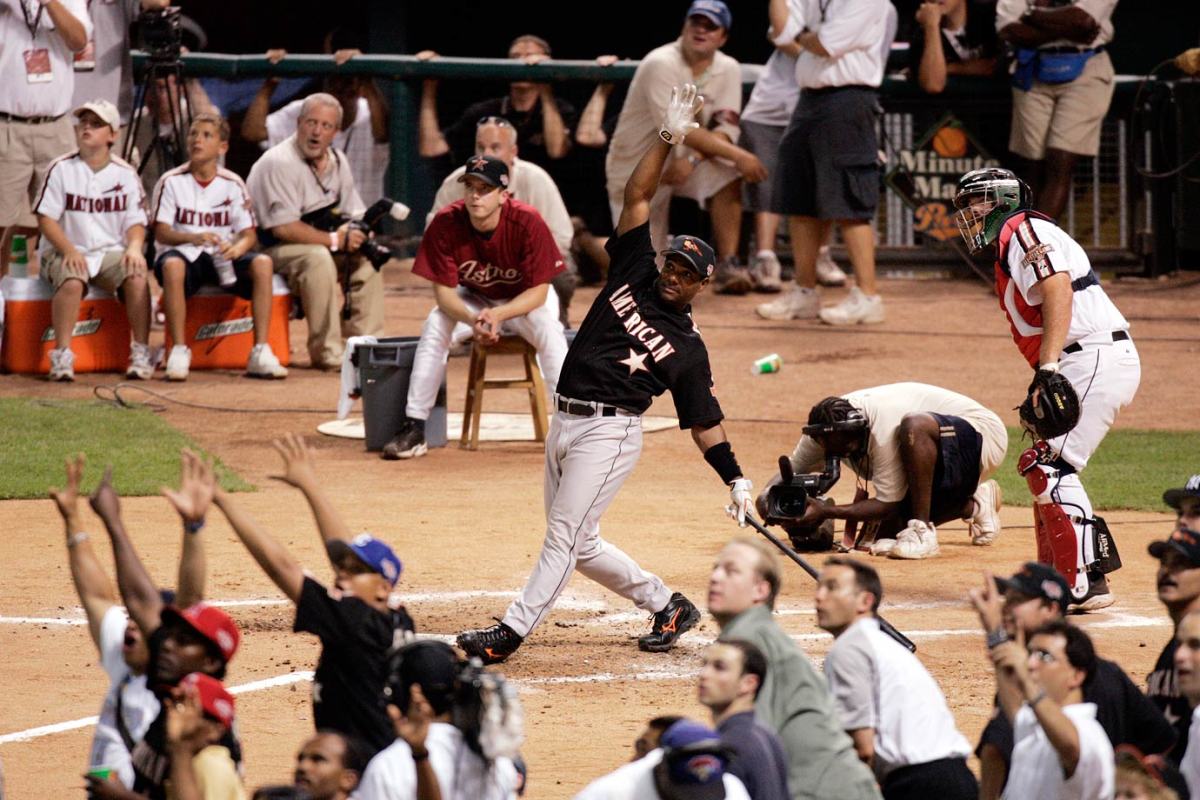
At Minute Maid Park in Houston, Miguel Tejada topped hometown favorite Lance Berkman in the final round with five home runs and an overall total of 27.
2005

At Comerica Park, Bobby Abreu went ballistic with a record 24 home runs in the first round and belted another 11 in the finals to defeat Pudge Rodriguez. Abreu would hit 41 total for the Derby to set an overall record. Ironically, Abreu would hit only six home runs in the second half of the season.
2006
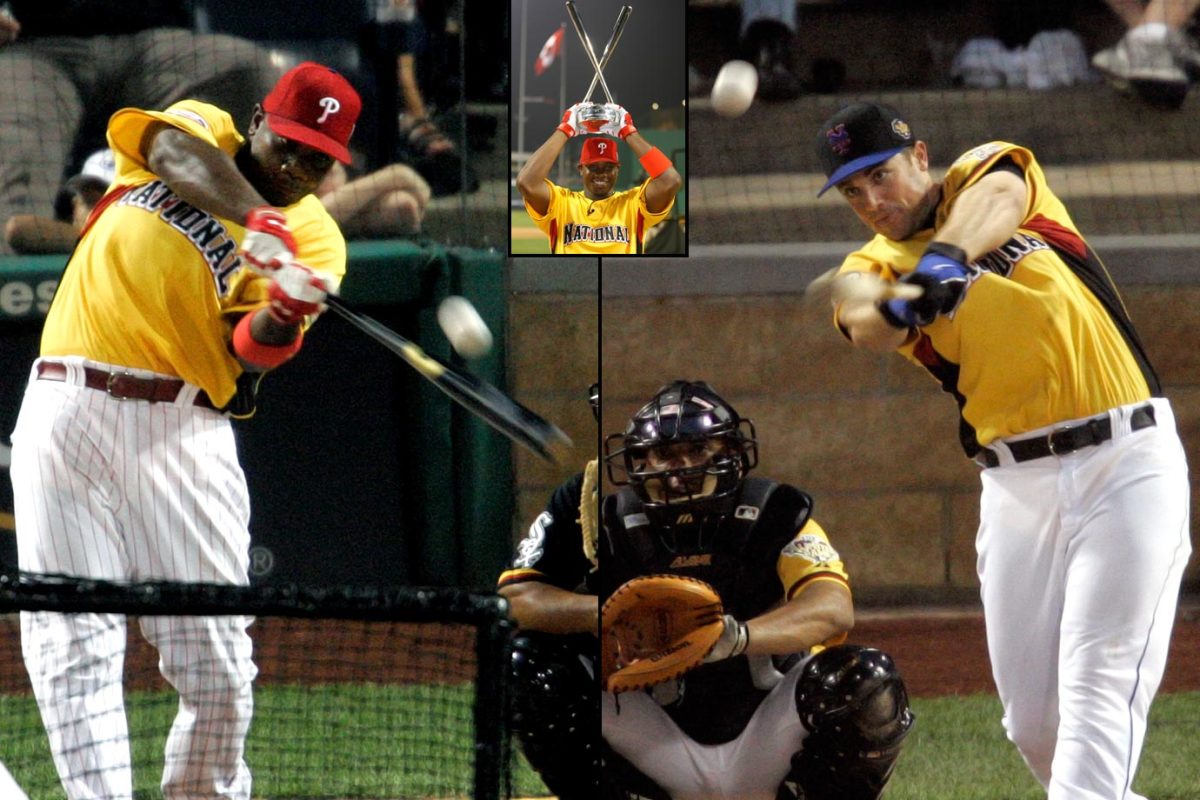
Ryan Howard's 23rd and final homer eliminated runner-up David Wright (22 HRs) and clinches his first Derby crown in Pittsburgh.
2007
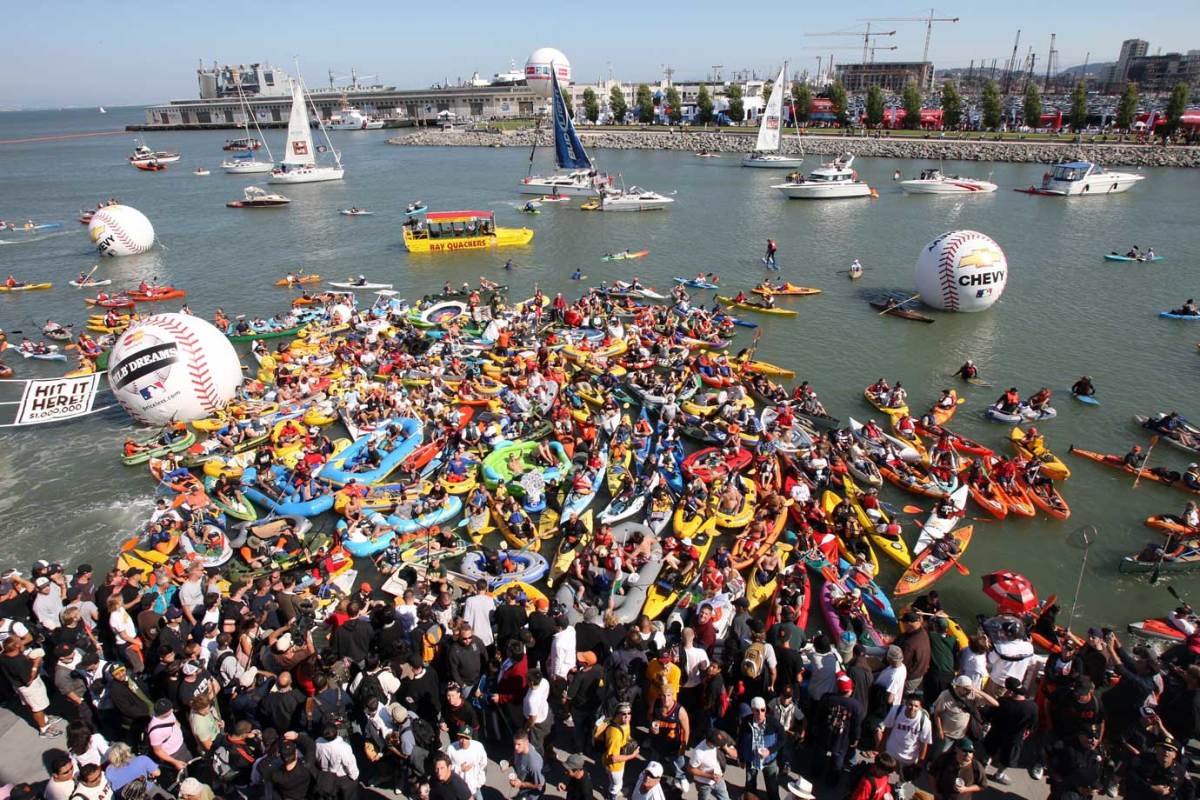
The kayaks came out in droves for the Derby in San Francisco, but they went home empty-handed -- zero homers would be counted as "Splash Hits."
2008
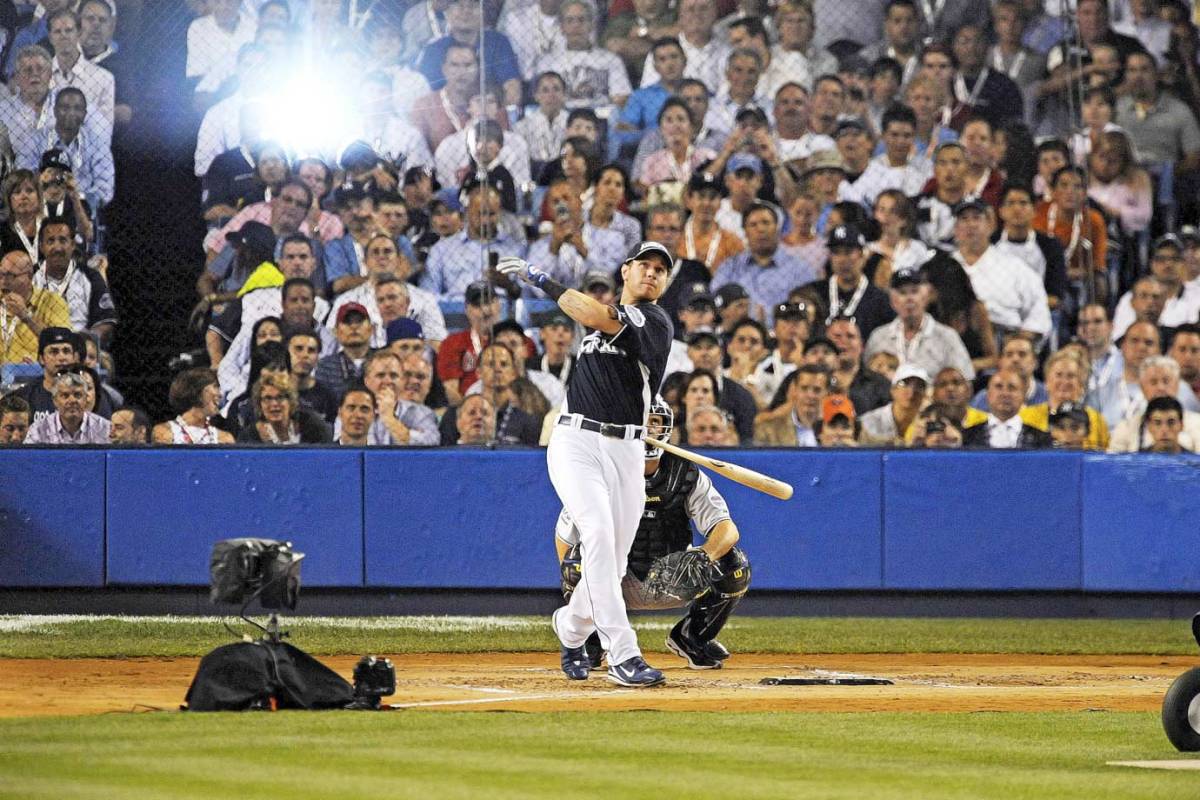
While Justin Morneau was the official winner, it was Josh Hamilton who captured the hearts of Yankee Stadium fans, breaking Bobby Abreu's mark for one round by clubbing a Derby-record 28 homers in the first round.
2011
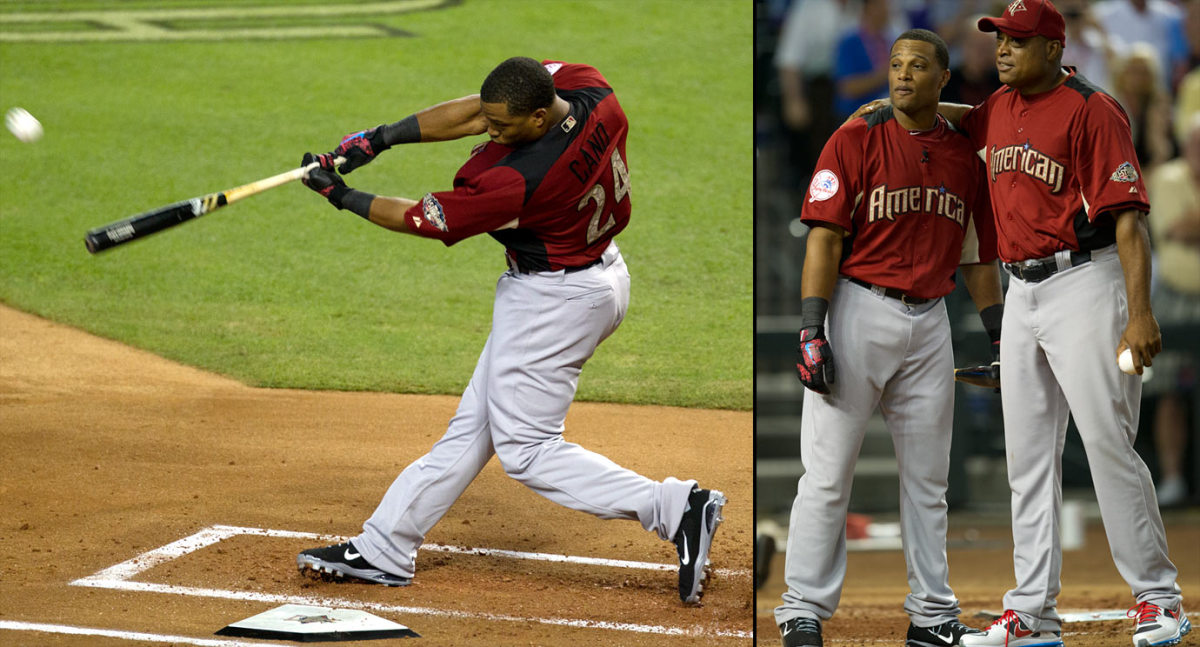
Robinson Cano outslugged Adrian Gonzalez to win a Home Run Derby that turned into a Yankees-Red Sox showdown. Batting last and being pitched to by his father, Cano defeated Gonzalez 12-11 in the finals after they each hit 20 home runs through two rounds
2012
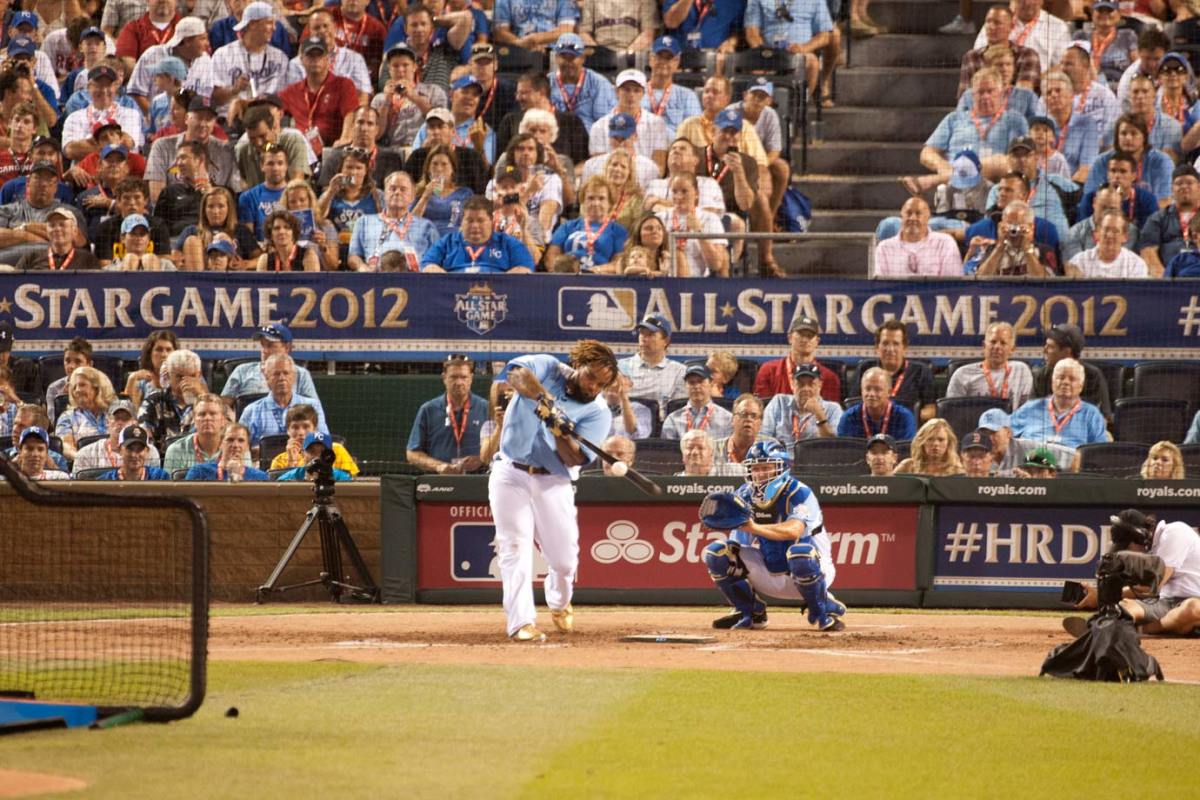
Prince Fielder tied the finals record as he beat Jose Bautista 12-7 at Kauffman Stadium. The Tigers slugger, who hit 28 homers in all, including a 476-foot shot, joined Ken Griffey Jr. as the only players with multiple Derby wins.
2013
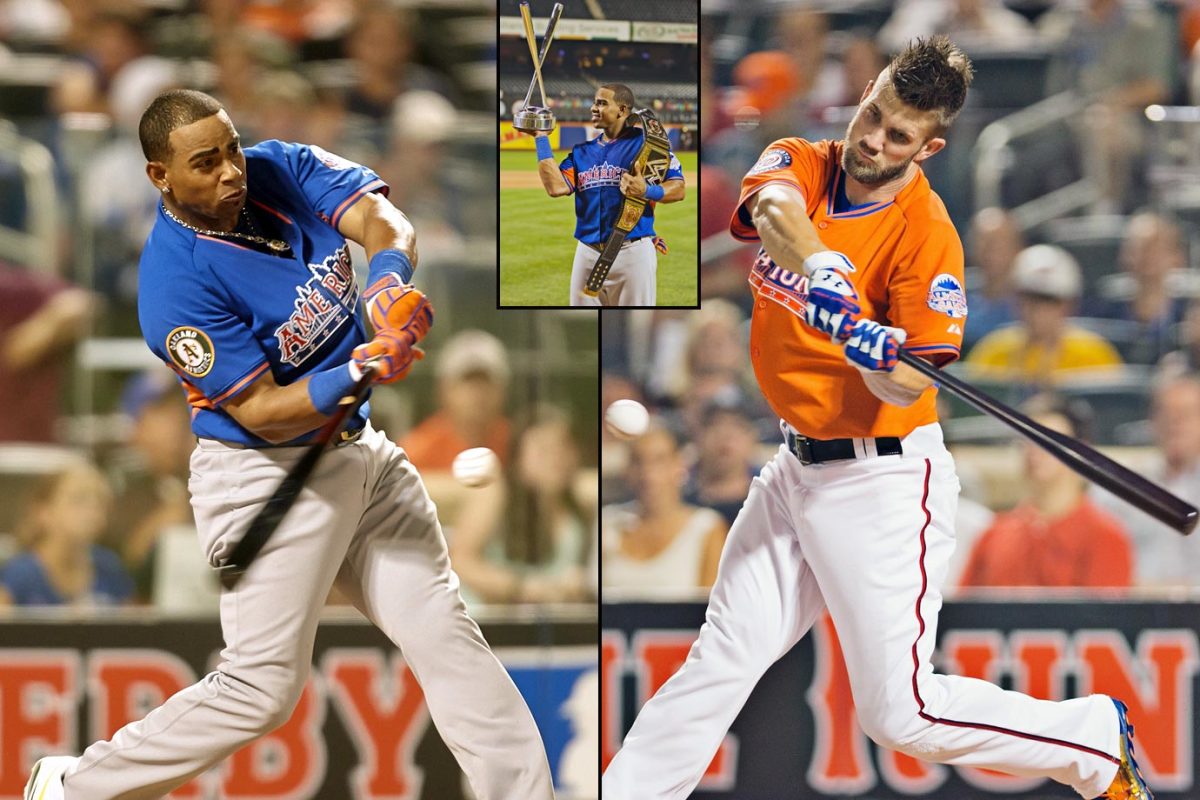
Yoenis Cespedes became the first player left out of the All-Star Game to take home the crown, needing just five outs to pass Bryce Harper in the finals with a 455 foot shot to center field. In only his second major league season, the outfielder from Cuba hit a whopping 17 home runs in the first round—more than any other player managed in their first two trips to the plate. Cespedes would go on to win again next year.
2015
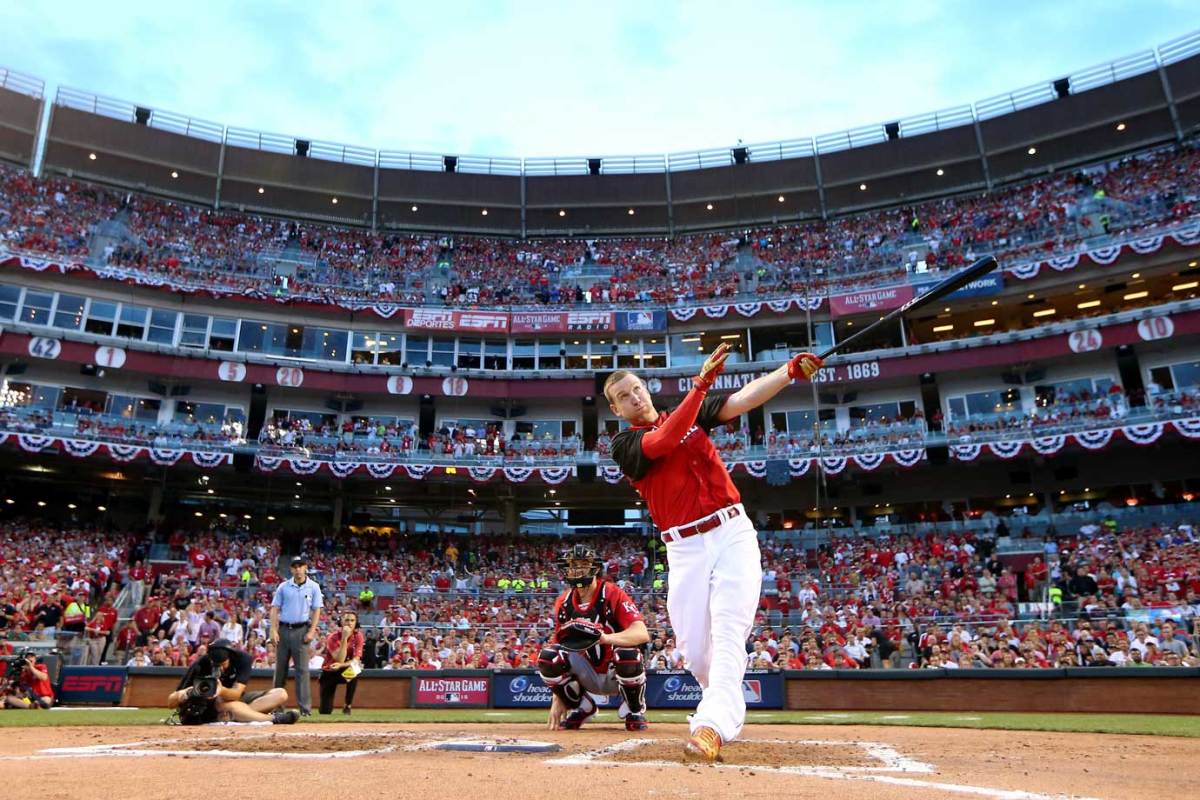
In the first year with timed rounds, it came down to the wire. Playing in front of his home fans at Great American Ball Park, Todd Frazier crushed one to the seats in left centerfield on his first bonus-round swing in the final round, giving him a 15–14 win over Dodgers rookie Joc Pederson. A year after falling short in the final, the Reds third baseman walked away with the hardware this time, becoming just the second player to win in front of his home crowd, joining the Cubs’ Ryne Sandberg (1990) in that category.
2016
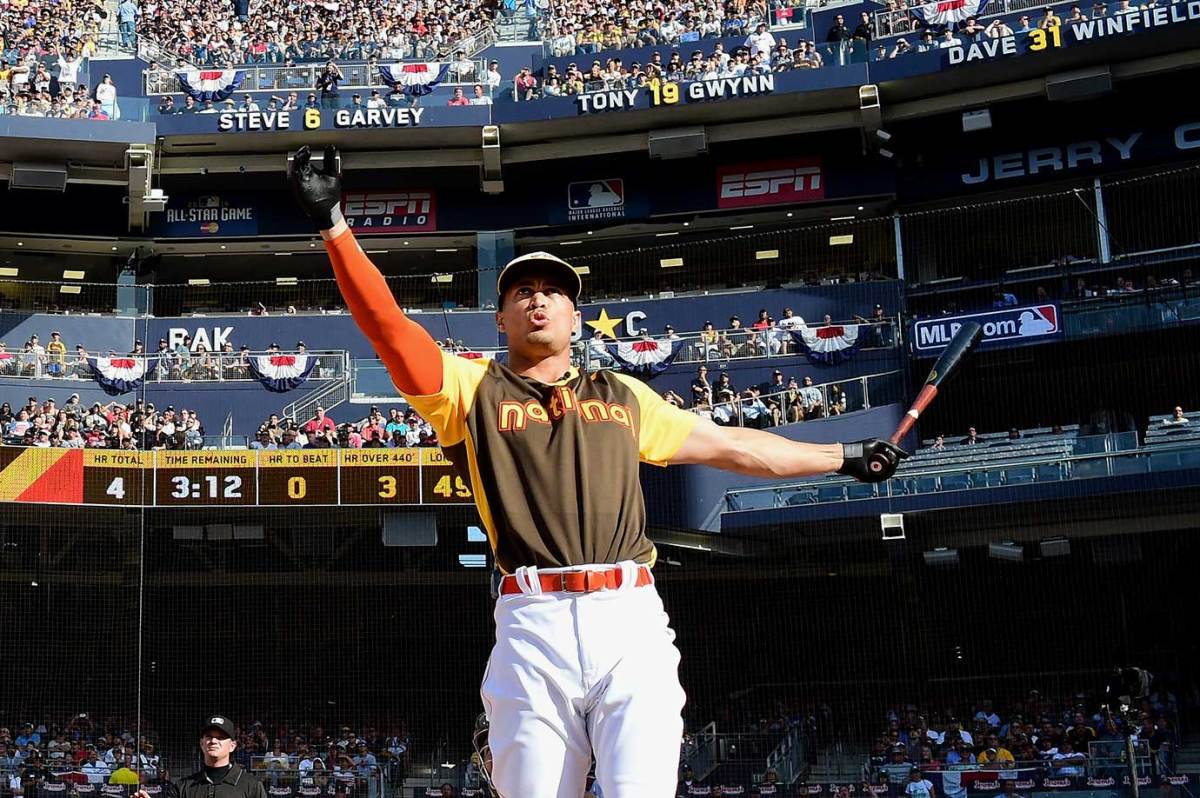
Giancarlo Stanton crushed a Derby-record 61 home runs en route to a victory. Stanton cruised through each of his matchups, winning 24–7 against Robinson Cano, 17–14 against Mark Trumbo, and 20–13 against defending champ Todd Frazier in the final round. Stanton hit towering shot after towering shot, wowing the crowd with his ability to spray balls all over the field. The Marlins outfielder hit the 10 longest bombs of the night, as well as 18 of the 19 longest.
